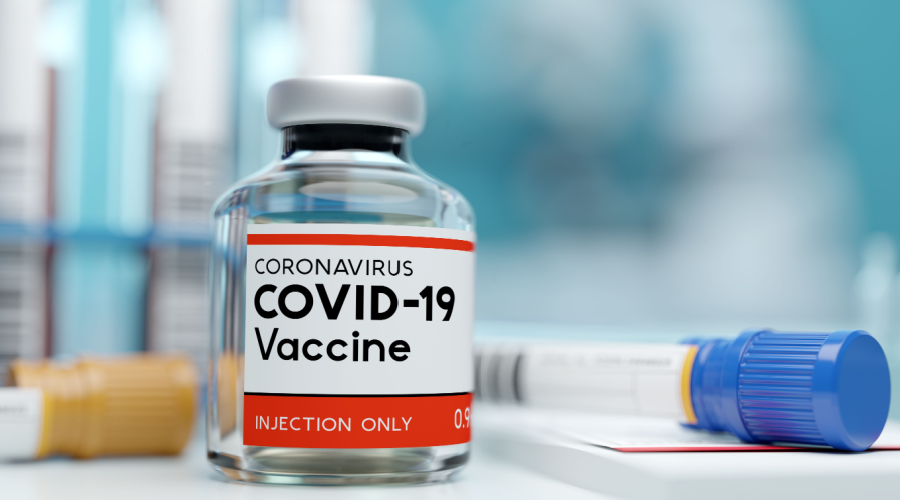Inside: A toxic work environment kills employee productivity and patient satisfaction. Learn how to spot the signs of a toxic pharmacy workplace before it consumes your business.
People’s well-being depends on their environment.
A healthy environment helps them thrive and a toxic environment holds them back.
As an owner or manager of an independent community pharmacy, your job is to build a pharmacy workplace where your employees can flourish. After all, happy employees can grow your pharmacy.
But because you often function in a different environment than your employees, it’s easy to not notice what’s happening. You get caught up in your high-level tasks and big-picture decisions and lose sight of what’s happening below you.
How Can a Toxic Workplace Culture Hurt Your Business?
Contamination among your employees may fester without you noticing until it finally becomes a problem you can’t avoid.
Or worse, that you can’t get rid of.
When the environment reaches toxic levels, it poisons every part of your business.
Employees don’t cooperate. Operations shudder. Productivity drops. Patient care suffers. And on and on.
When the poison spreads deep enough, you may not find a cure.
So, your best defense is to catch the contamination before it reaches toxic levels. To do that, you need to know the signs.
10 Warning Signs of a Toxic Pharmacy Work Environment
Use these warning signs to recognize if the vibe in your pharmacy workplace has turned toxic. (And learn how to turn it around.)
1. Employees are less productive
Watch for typically reliable employees turning unreliable.
And, look at the big picture. Widespread low productivity could indicate something’s awry in the environment.
De-motivation often results from an environment where:
- Employees don’t feel appreciated by their leaders
- Competition among employees is bitter
- Unequal treatment abounds
When employees don’t perform well, managers may default to consequences or threats.
But those responses may only increase the toxicity.
If employees aren’t producing as they used to, first meet individually with those employees and talk to them about what’s going on.
That’ll lead you to an antidote instead of worsening the infection.
2. Employees don’t voice their opinions
When’s the last time one of your employees made a suggestion?
Almost every employee has ideas for how his or her work could improve. If you never hear from them, that indicates they don’t feel free to voice their opinions.
Whether they fear judgment or repercussions, employees who feel stifled will become deeply dissatisfied with their work.
A non-toxic work environment fosters new ideas, discussion, and innovation. If that’s not taking place, you need to take notice.
3. Employees are quitting
High employee turnover is a sure sign of a problem with the pharmacy workplace environment.
Of all the factors that keep employees satisfied with their job, work environment tops the list. It’s so important that it can overcome a slew of other dissatisfactions at work.
That means if you find yourself hiring new employee after new employee, it’s time to measure the toxicity of your pharmacy work environment.
4. Employees don’t talk to one another
Although it seems contrary to productivity, frequent conversation among employees reflects a healthy environment.
When employees discuss positive things unrelated to work, it means they’re getting along. And good work relationships are key to a satisfying work environment and positive employee engagement.
If you notice employees giving one another the cold shoulder, keeping silent, or bickering, your work environment could be contaminated.
5. Employees are asking for a different schedule
When employees can’t resolve conflict with one another, they often turn to avoidance.
So, a front-end employee who shares a morning shift with the coworker she dislikes might start asking for the afternoon shift. Or, for a shift with different duties.
Frequent schedule changes might also indicate apathy in employees toward their work. When work becomes a low priority to them, they try to schedule it around their life instead of the other way around.
6. Employees are getting sick
Recurrent sickness in employees could indicate a toxic workplace culture for a couple of reasons.
One, high stress causes illness. And a toxic work environment commonly causes chronic stress. Just like second-hand smoke, a toxic work environment eventually begins to affect the physical health of the people working in it.
Two, employees use sick days to avoid coming to a toxic pharmacy workplace. Whether they feel apathetic toward their work or they dread going in, calling in sick is the easiest way to avoid work without facing repercussions.
Of course, employees simply get sick, too. Diagnosing toxicity requires other signs in conjunction with unusually recurrent sickness, as well as an investigation into the real problem.
7. Employees are complaining
Every business receives complaints no matter the environment.
But the type and the timing of complaints can indicate toxicity.
Complaints about poor treatment by peers or by management indicate a potentially poisonous environment.
Complaints that come consistently or concurrently can indicate deep problems that you need to resolve immediately.
8. Employees are blaming one another
When employees start pointing fingers, you know there’s toxins in the air.
Blame is in one sense a betrayal. It erodes trust among employees and it shows that employees don’t value one another.
Blame also indicates fear. Employees fear what’ll happen when they take responsibility, so they try to shift it to someone else.
Those are toxic characteristics. The moment one employee blames another, take immediate action to get to the root of the issue before gets worse.
9. Employees don’t treat managers with respect
Do you notice a sassy tone in your employees when they talk to you or your managers? Do you find them avoiding you whenever they can?
When employees stop respecting their managers, it’s time to sound the sirens.
Employees stop respecting management when they feel unappreciated, disrespected, or unfairly treated. Those are all qualities of a deeply toxic pharmacy work environment.
When that happens, employee performance will drastically decline. And, they’ll start looking for other opportunities.
10. Your pharmacy is losing patients
Toxicity infects everything. And its effects spread everywhere, even to your patients.
No matter how hard your employees try to quarantine it, your patients will notice.
Patients will notice poor attitudes. They’ll sense it in the air and in the small ways your employees communicate with them.
Patients will notice poor productivity. They’ll experience it in reduced quality of service and care.
Of course, your pharmacy can lose patients for many reasons. But if you notice a drop off, your diagnostics should include an investigation into the state of your pharmacy’s work environment.
Keep your pharmacy healthy by watching for these signs of a toxic pharmacy workplace.
A Member-Owned Company Serving Independent Pharmacies
PBA Health is dedicated to helping independent pharmacies reach their full potential on the buy-side of their business. Founded and owned by pharmacists, PBA Health serves independent pharmacies with group purchasing services, wholesaler contract negotiations, proprietary purchasing tools, and more.
An HDA member, PBA Health operates its own NABP-accredited secondary wholesaler with more than 6,000 SKUs, including brands, generics, narcotics CII-CV, cold-storage products, and over-the-counter (OTC) products — offering the lowest prices in the secondary market.












